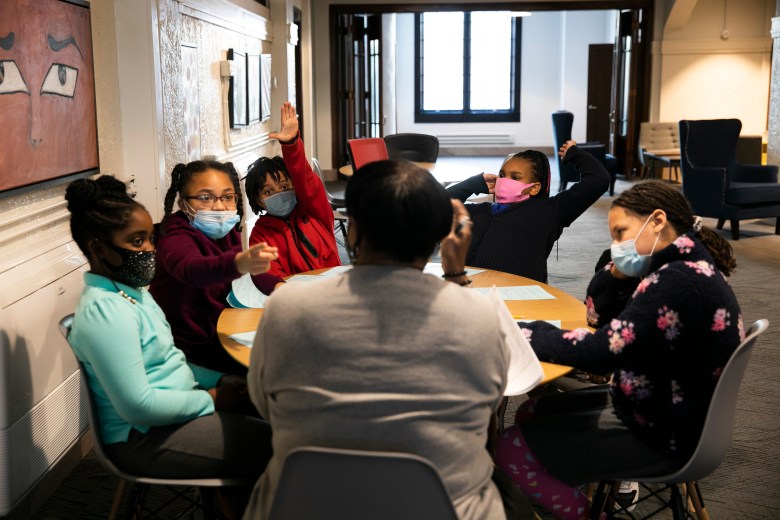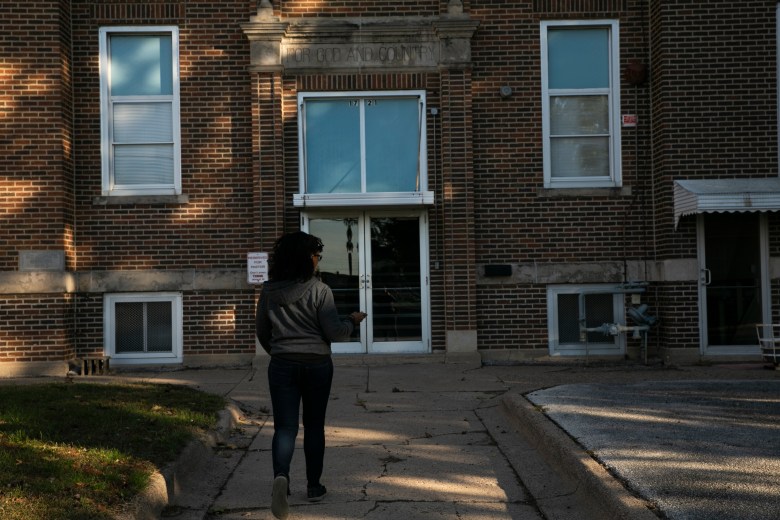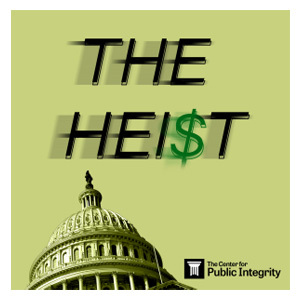It’s a stark comparison.

Eleven years before the Civil Rights Act of 1964, the difference in median wealth between white and Black families — in today’s dollars to account for inflation — was about $47,000.
More than half a century has passed since 1960s laws banned racial discrimination in hiring and other key aspects of life but didn’t address the economic consequences of the country’s long history of such actions. The wealth gap, far from closing, has grown to $164,000.
White Americans are more likely to receive inheritances or other monetary gifts from family, according to Federal Reserve data, a key way the past feeds into a multi-trillion-dollar gulf. It’s baked into the future, too. Even among those anticipating an inheritance down the road, white families estimate they’ll receive nearly twice as much as Black families.
What can the country do to avoid an equally grim picture in another half-century?
In more than a year reporting a story and podcast about one woman’s effort to narrow wealth disparities in her hometown, we heard and saw recommendations ranging from small to sweeping.
Almost all would, at best, narrow the gulf or keep it from growing. Only one — reparations — seems to hold the potential for eliminating it in one fell swoop.
But many of the recommendations would have more impact together.
Episode 5: A deeper look
Stories about previous episodes
“These things absolutely complement each other in terms of working to close the racial wealth gap,” said Dania V. Francis, an assistant professor of economics at the University of Massachusetts Boston.
Kyle K. Moore, an economist with the Economic Policy Institute’s Program on Race, Ethnicity, and the Economy, put it this way: “Our current system has so many points of failure that you really have to address them on multiple levels.”
Side note: Many of the ideas on this list could improve conditions for Americans of modest means, regardless of race.
Here’s what we heard, starting with the big one:
Reparations
American slavery was a particularly horrifying form of mass wage theft that economists say still impacts family net worth today. But calls for federal reparations — restitution payments — for descendants of enslaved Americans often point to what happened after slavery, too.
William Darity Jr., a Duke University economist who has researched the wealth divide for decades, sees many examples of federal culpability in the period from Reconstruction onward. Promising land to formerly enslaved people and then grabbing it back while distributing millions of acres to white families. Standing by amid decades of mob violence and voter suppression, conditions that cut lives short, sapped Black wealth-building and permitted stark exploitation and thievery. Blocking Black communities from credit. Handing out government benefits unequally.
Compare similar groups today — married and unmarried, households with or without kids, college graduates — and net worth is markedly higher for whites than Blacks. Black households headed by a college graduate, in fact, have a lower net worth than white households headed by someone who didn’t finish high school.
“The federal government is responsible for the policies that produced the racial wealth gap,” Darity said, “and the federal government has the responsibility to fix it.”
“The federal government is responsible for the policies that produced the racial wealth gap and the federal government has the responsibility to fix it.”
William Darity Jr., Duke University economist
H.R. 40, legislation to create a commission to study reparations, has been proposed repeatedly since 1989. It has yet to make it to a full vote in the U.S. House of Representatives.
This year, there’s a push to get there after it was voted out of committee for the first time in April 2021. But the bill would then face a divided Senate.
In the absence of federal action, some cities have begun implementing or proposing programs.
“It’s great energy,” Francis said. “But I would caution: … Piecemeal local programs are not even going to make a dent in the racial wealth gap. … It’s a national issue, and it can only fully be addressed by the federal government.”
Better enforcement of non-discrimination laws
The Civil Rights Acts of 1964 and 1968 made racial discrimination in areas such as employment and housing illegal.
But there’s a difference between banning something and stopping it.
The Markup, for instance, found in a 2021 analysis that Black applicants were 80 percent more likely to be turned down for a conventional home mortgage than similarly qualified white applicants.
And multiple studies, including ones that sent employers fictitious resumes with names selected to sound white or Black, have found that white job-seekers receive more callbacks. The share of Black job seekers not finding work averaged roughly double the white rate in the 2010s, not a whole lot better than in the 30 years before that.
Want more of The Heist?
Get behind-the-scenes info and alerts when new episodes become available.
Use the unsubscribe link in those emails to opt out at any time.
Then there are wage disparities. As just one example: Census Bureau data tracking both white and Black earnings across 217 occupations — from bus driver to CEO — shows higher median pay for white workers in nearly 90% of those job classifications.
A 2019 Center for Public Integrity analysis found that the system set up to protect workers from discrimination routinely fails to do so. Many complaints to the U.S. Equal Employment Opportunity Commission were being closed without investigation. Few ended with workers receiving some form of relief.
In a report for the Economic Policy Institute, a think tank focusing on low- and middle-income workers, Jenny R. Yang and Jane Liu argue that more funding for “vastly under-resourced” enforcement agencies and new requirements for employers are key to disrupting workplace discrimination.
“In other words, rather than primarily focusing on proving discrimination after the fact, our laws must create more powerful incentives for employers to adopt practices designed to prevent discrimination, audit systems for bias, and proactively correct problems,” they wrote.
A federal jobs guarantee, putting unemployed people to work on public projects in the vein of the Depression-era Works Progress Administration, would be another way to counter hiring bias. It’s a way “to stop the bleed of wealth from families when they’re exposed to unemployment,” said Moore, with the Economic Policy Institute. “Black families are disproportionately exposed.”
Rethinking systems that maintain the gap
Taxes. Higher education. Healthcare. Credit scores. Lending.
So many of the systems that run through our lives have an impact on economic inequality, and too often not for the better. In The Whiteness of Wealth, Dorothy A. Brown points to multiple ways the tax code rewards economic decisions that white families are more likely to be in a position to make.
The same dynamics play out in the credit-score system that affects our ability to get a loan or rent an apartment. “A credit score kind of bakes in the racial wealth divide to begin with,” said Jesse Van Tol, CEO of the National Community Reinvestment Coalition.
Lower levels of family net worth paired with rising college costs mean Black college graduates have an average of $25,000 more in student-loan debt than white graduates. In a country where health problems can trigger bankruptcy, a higher share of Black Americans are burdened with medical debt and don’t have health insurance, driven by disparities in job benefits and states that won’t expand Medicaid access.
Advocates and experts say that changing the way these systems work — like proposals for tuition-free college or higher taxes for the wealthiest people — could improve outcomes for many Americans, not just Black families. Even so, there’s the potential to narrow racial wealth disparities because of the outsized impact unequal systems have on Black Americans.
While Congress and federal agencies have the most power to fix bad systems, that doesn’t let states, cities, businesses and others with influence off the hook.
“This is a fight we all need to be engaged in collectively,” said Quentin Hart, mayor of Waterloo, Iowa, which recently began evaluating decisions for their impact on equity. “Businesses, banks, Realtors, elected officials, community officials, churches … We need to understand that we are all in this together, and it’s going to take all of us to be able to move the needle.”

Funding Black changemakers
Black community leaders with great ideas to address local consequences of the wealth gap often have trouble getting the capital they need to do it — because of the gap.
Disparities cut just as starkly through philanthropy as they do through the rest of the country. Nonprofits are disproportionately led by white executives and board chairs, and white-run groups receive much more funding on average than Black-led ones.
A report by Echoing Green and The Bridgespan Group, two social-sector firms, concluded in a 2020 report that more equitable funding is critical to reducing inequality “because these leaders often bring strategies that intimately understand the racialized experiences of communities of color and the issues these communities face.”
We dove deep into efforts in Waterloo because that’s where ReShonda Young is trying to open a Black-owned bank to address economic inequality, the focus of our podcast. What we found included an example of community action that people in other places — including funders — could look to replicate.
A group of Black community leaders there decided to tackle local economic inequality by founding an organization that would run programs such as an accelerator supporting Black businesses. They were able to launch it rapidly both because they’d assembled the right people and organizations with money in the majority-white city provided resources.
A group in the process of shutting down turned its nonprofit status and remaining money over to the new 24/7 Black Leadership Advancement Consortium. Another local organization provided seed funding.
The success of 24/7 BLAC’s accelerator, launched in 2020, won the group grants from state and national organizations to keep it going.
“We have some extremely talented individuals in our community,” said Joy Briscoe, executive director of 24/7 BLAC. The economy as a whole misses out on innovation “by not making sure we have an equitable playing field. … We have to do better.”
Asset-building programs
“Baby Bonds” is an idea that would decrease inequality at birth. U.S. Sen. Cory Booker’s proposal would put $1,000 to $3,000 in an account for every infant — the amounts varying based on family income — that would be managed by the U.S. Treasury until the account holder turns 18.
A 2019 Duke University analysis says that approach would help more than even debt-free college.
But a program that links payment amounts to parental wealth would be better than one that is based on income, the Economic Policy Institute’s Moore said. Even with a good income, Black families often have a lower net worth than white families. That’s driven by racial differences in intergenerational wealth — parents’ ability to help with college costs, for instance. And it’s a precarious situation, he points out.
“Having a decent salary but no wealth behind it is a situation that policy should remedy but is often not addressed,” Moore said.
Guaranteed income is another potential asset builder that could reduce racial wealth inequality, depending on program design. Pilot initiatives are trying out no-strings-attached cash payments to small groups of people as a method for helping individuals and families escape poverty.
A program in Stockton, California, provided 125 residents $500 a month over two years, starting in early 2019. All recipients lived in neighborhoods with median income below roughly $46,000. A year in, program leaders said, those who received the money were more likely to have full-time jobs, to feel less anxious and to have a greater ability to pay for emergency expenses than study participants who didn’t get the funds.
A new program in Georgia will enroll Black women as participants for a two-year project. The In Her Hands program was designed after conversations with community members about their needs — which showed that people lacked money, not the financial literacy to know how to use it.
“It doesn’t matter how well you can budget when your income consistently lags behind the cost of providing for basic needs for yourself and your family,” organizers GiveDirectly and the Georgia Resilience and Opportunity Fund wrote. “Community members identified recurring cash relief as a key tool to get them ‘off the hamster wheel’ of persistent debt.”

Black banks
Black-owned banks are sometimes bandied about as the wealth-gap solution, so just to clarify: The gulf is way too big for that, even if the Black banking sector weren’t small.
But Black banks can and do help make their communities more equitable.
“People save more and just have better economic outcomes in areas where there is a bank, particularly a bank that accepts them,” said Kristen Broady, speaking about the matter while an expert at the Brookings Institution. She’s now director of the Economic Mobility Project at the Federal Reserve Bank of Chicago.
What Broady means can look like “having more Black-owned banks in Black neighborhoods, Hispanic-owned banks in Hispanic areas, etc., or … having people from the community work in the bank so they understand the community’s needs and who’s who,” she said.
Stephone M. Coward II, a co-founder of BankBlackUSA, which helps people find Black financial institutions, said these banks tend to “stand in the gaps, especially when it comes to banking deserts.” But they’ve long been under-resourced, buffeted by the same forces that built and maintained wealth divides.
He’s happy to see the recent shift of more big companies doing business with Black banks, a trend that could increase investment in the communities they serve.
“We know that banking Black is not a panacea for closing the racial wealth gap, but it’s a tool,” Coward said. “It’s a multi-pronged approach.”
William Michael Cunningham, economist at Creative Investment Research, has analyzed Black banks for three decades. His view: “Don’t count on the current form of white supremacy masquerading as capitalism to solve Black/white wealth disparities.” He’s pessimistic about the odds of it closing through any means because American society has so long been structured to extract wealth from Black people, not just historically but also in more recent decades through avenues like predatory lending.
He suggests a focus on “life maximization” instead, policies and programs that prioritize health and wellbeing.
But the systems that produce economic inequality were created by people. And people can remake them.
Andre M. Perry, a senior fellow at Brookings Metro and author of Know Your Price: Valuing Black Lives and Property in America’s Black Cities, sees reasons for optimism on that front, from the increasing share of people in favor of reparations to flourishing local equity efforts. It won’t be easy — as backlash shows — “but I think we’re in the upward trajectory toward progress,” he said.
“There’s a cultural shift that will open up a window for future policy changes,” Perry said.
Clarification: This story was updated to clarify that economist William Michael Cunningham was speaking of the U.S. economic system, rather than the potential of a theoretical capitalistic system.


